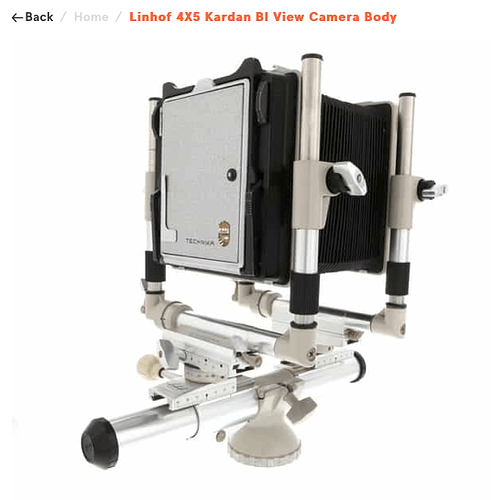I was just reading this article:
Large Format Photography
For me, it brought back so many thoughts jumbled together, the (few) images that I did take long ago with large format camera, and dealing with my darkroom that was fully set up to print 4x5 negatives. When I moved to Florida, I had already switched to digital, and while I hated the idea of selling all my old gear, my tiny 600 square foot apartment had no reasonable way to set up my darkroom gear. I never got as good as what’s described in this article - by then, I was back to processing 35mm film. This article brought up lovely memories, and thoughts, and “what if…”
@Wolfgang will ask why I’m wasting my time reading stuff like this, when I could be out “doing”. He’s right, of course, but I’ve always been a “dreamer”, and sometimes (but not always) I can get my dreams to come true. But then there’s that saying “be careful what you wish for, as you may get it”. That’s also very true. …but had I not been a “dreamer”, I never would have bought my M10, and my constant camera companion would be my latest Nikon, which has been the case for most of my life.
Anyway, @Joanna, I think reading this will put a smile on your face. This electronic magazine would probably love it if you submitted an article to them, and a lot of people would benefit. In the meantime, I accept everything I read, and also accept that for me this is all “dreams”, not my reality.
Of course, in today’s reality, I wonder how much of your Large Format Photography goes from camera to darkroom, and how much goes from camera to PhotoLab? It’s now 2023, and if I accept that I could some day buy a large format camera, and the gear to develop the negatives, I could use my flatbed scanner and get the image into my computer, at which point PhotoLab would take over (once I had learned how to properly scan a 4x5 negative). Now, in 2023, that would be plausible and do-able, and likely affordable.
Since this large format gear is almost certainly NOT recognized by PhotoLab, what are your impressions of doing this? How do you get your processed film images into PhotoLab?
The cost can be very reasonable - for a little over $300 someone can buy this, buy a lens, and the gear to process 4x5 negatives. It would be a start. This gear, along with a scanner, and a LOT of learning, would get someone into shooting in LF…
https://www.keh.com/shop/linhof-4x5-kardan-bi-view-camera-body-679649.html
